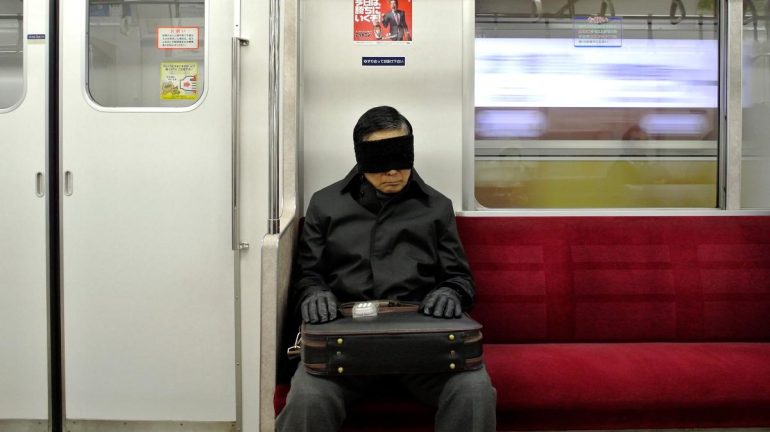Great minds by swearing a little sleep in between: a trick to make brains smarter? Booster for creativity? That’s what the research says about naps.
The famous inventor and light bulb pioneer Thomas Edison is said to have given importance to a particular form of blinking. He is said to have fallen asleep sitting on a chair holding a steel ball in each hand. As it dawned on Edison, bullets fell on the floor and the noise woke him from sleep.
The inventor is said to have been convinced that it produced thoughts that came to his mind during the transition from waking and sleeping. And which are then not accessible because of deep sleep. Spanish artist Salvador Dali – known for his surrealistic dream worlds – is said to have appreciated this kind of ultra-short blink.
Can a nap like this really boost creativity? A recent study suggests that this type of sleep trick may actually be true. Edison’s technique can be tried by anyone “wanting to be kissed by the museum at home or at work,” writes a team led by Delphine Odiet from the Paris Sorbonne University in Science Advances. These methods have the potential to act as creativity boosters.”
Sleep researchers talk of “state between worlds”
It’s not clear whether this approach works for everyone or only some people, says Anna Heidbreder, sleep researcher at the Medical University of Innsbruck. But you must try the technique. “So everyone can find out for themselves whether it will help them.” So far, she has recommended short naps for patients — 20 to 30 minutes if possible, not too late in the afternoon — to increase energy, says Headbreeder. It’s intriguing that the ultra-short naps “may have something to do with creativity” as described in the study. The sleep researcher speaks of a “state between worlds”.
Experts basically divide sleep into four stages: falling asleep (N1), light sleep (N2), deep sleep (N3) and dream sleep (REM). Researchers typically determine a person’s stage of sleep by measuring brain activity, muscle tension, and eye movements. While relatively little is known about the stages of deep sleep, relatively little is known about the N1 phase – the transition from wakefulness to sleep. “This stage is very short, so it has hardly been researched until now. Their function is unknown,” says Thomas Penzel, president of the German Society for Sleep Research and Sleep Medicine (DGSM).
read also about
The N1 phase lasts between a few seconds and a few minutes. If a person is distracted by this, it is difficult for them to look back whether they were just awake or asleep, thought or dreamed. Involuntary, spontaneous, dream-like experiences, write the audiet and his team. Recent experiences are associated with loosely linked memories in a constructive way. This can encourage new ideas to emerge. Experts also call this condition hypnagogia.
In the N1 phase, people begin to isolate themselves from their surroundings and can therefore see how they allow their minds to wander, the researchers write. At the same time, however, there is still enough logical ability to “identify the creative spark”. Audet and his team now wanted to find out whether there were actually particularly creative moments in the sleep phase, which turns white after deep sleep.
How do you test the benefits of nap time?
In their experiment, more than a hundred test subjects were asked to solve dozens of short mathematical puzzles that followed the same principle. From a row of numbers they had to get a new row according to the given rules – and name the last digit as the solution. However, there was some sort of trick involved. Once the test subjects had this, they had the solution very quickly. The researchers interpreted the see-through trick as a creative achievement.
Test subjects initially worked through dozens of series, with 20-minute breaks in a darkened room. It was quite desirable to fall asleep; Test subjects should sleep 30 percent less than normal the night before the experiment. The test subjects sat in a relaxed position and held an object – a small bottle – in their hand. As the subjects turned away and their muscles relaxed, it fell to the floor.
Some subjects did not sleep at all during rest and remained awake. Others woke up and immediately woke up again to the noise of the bottle – ie in the N1 phase. However, some slept more deeply, so they were then in the N2 stage.
After the break, test subjects were asked to convert a further series of numbers. It turned out that about three times as many people who had been dodged for a while came up with math puzzle-solving tricks as those who stayed awake. The difference was even greater compared to those who slept. The assumption behind this: in the twilight phase, a kind of creativity optimum may arise, the results of which, however, disappear again upon diving into the stages of deep sleep. According to sleep researcher Penzel, however, it is not yet possible to explain why deep sleep has this effect.
Oudiette and Co called observing the move during the experiment a “eureka moment.” However, this happened only shortly after waking up – on average about 30 minutes later. According to the authors, the reason for this delay is unclear. They state that according to tradition, the inventor Edison had a brain wave right after he woke up. Sleep researcher Penzel isn’t surprised that the positive effect has been a long time coming. Eventually, the organism only has to start slowly when the N1 phase ends abruptly. “Wake up is not a switch that you flick. These are processes that take time.” For the Innsbruck specialist headbreeder, this delay raises the question of whether creative performance occurs when the road is rolling and only The latter enters consciousness. Or whether Twilight Away enables you to achieve a special feat later.
What we build in our little dreams can be important
Penzel speaks of a “brilliant idea”. So is this a trick everyone can use to increase their creative output? “I’m skeptical about it. To some extent, though, it may be possible.” The study authors, working with the auditor, emphasize that the success of the method is absolutely crucial to the selection of the object placed in the hand. IMPORTANT. It should make a loud enough sound when falling. It should also be smooth enough that it easily slips out of your hand when you’re in twilight and big enough that your fist can’t close around it.
American researchers, led by Adam Horowitz of the US Massachusetts Institute of Technology (MIT), are already a step ahead and have brought inventor Icon Edison’s vision into the 21st century. Your dormio system artificially enhances the state of hypnosis and ensures that what is perceived can be evaluated and used later.
For this purpose, it is closely monitored that a test subject who is just starting in the morning does not leave the N1 phase. If he threatens to fall into a deep sleep, under certain conditions a sound brings him a little closer to the state of wakefulness without being fully conscious. The researchers found that the subjects made up these words in their dreams. In addition, between waking and sleeping in the state the test subjects are encouraged to describe what is going on in their minds. This conversation will be recorded, write dormio inventor. “We don’t want people to forget their useful ideas again.”
We want to know what you think: Augsburger AllGeamine therefore works with the opinion research institute Civi. Read here what representative surveys are and why you should register.

Web guru. Amateur thinker. Unapologetic problem solver. Zombie expert. Hipster-friendly travel geek. Social mediaholic.





